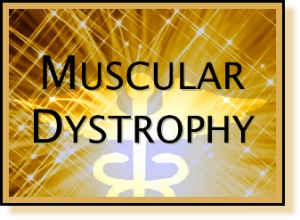A good starting point to learn about Muscular Dystrophy.
CAUSES OF Muscular Dystrophy
Muscular Dystrophy![]() is an inherited disease, a genetic disorder – Wrong or absent genetic information stops the body from producing essential proteins required to build healthy muscles. It is a complex disease and researchers are still learning how to fight the condition.
is an inherited disease, a genetic disorder – Wrong or absent genetic information stops the body from producing essential proteins required to build healthy muscles. It is a complex disease and researchers are still learning how to fight the condition.
TYPES OF MD
As mentioned above, MD is an inherited genetic disorder – one is born with it. It is not contagious and one cannot catch it from others. However, even though one is born with this disorder, symptoms of MD start manifesting at different ages depending upon the what type of MD condition one is suffering from. Here are the various forms of MD, classified on the basis of the age of onset of the symptoms:
Since Birth
Congenital MD: This is a rare form of MD that affects a child right from the birth stage itself. The child shows weakness, limpness and very slow muscle and motor development.
Birth To Adulthood
Myotonic MD: This type of MD is also known as Steinert's disease and it affects both males and females. Typically, the facial muscles begin degenerating initially, and then the muscles of the hands and the legs too start weakening.
Late Childhood – Early Adulthood
Facioscapulohumeral MD: This is also known as the Landouzy–Dejerine disease and it affects both the sexes. It causes powerlessness in muscles located in the face, shoulders, and the upper arms, and possibly, muscles of the hips and legs.
Limb-girdle MD: Again, affects both the sexes by causing weakness in the muscles of the upper leg and shoulders.
Young Boys
Duchenne MD: This is the most extreme form of MD that affects only young boys. It causes increasing muscle weakness, and first sets in the leg muscles.
Emery–Dreifuss MD: The symptoms for this type of MD are compressions in the calf muscles, or their weakness. Also affects muscles of the shoulder and the upper arm.
Older Boys – Young Men
Becker MD: Slightly milder than Duchenne muscular dystrophy (discussed above), but affects only older boys and young men.
Middle Age
Distal MD: Causes degeneration of the muscles located in the feet and hands.
Apart from these, there is one more type of MD, viz., Oculopharyngeal MD, which causes weakness of the eye and throat muscles. This type affects both the sexes.
SYMPTOMS OF MD
As MD directly affects muscles of the hands, legs, face and the shoulder, the symptoms too are connected with weakness in movement, body balance and the like. Here is a list of the principal symptoms of MD:
1. Contractions of the leg muscles
2. Weakness or difficulty while walking, or inability to walk
3. Poor body balance
4. Curvature in the spine (Scoliosis)
5. Falling down frequently
6. Gradual wasting of the muscles
7. Refusing-to-go-away weakness in the hands shoulders and arms
8. Loss of facial expressions
9. Difficulty in closing the eyes
10. A slack jaw or drooping eyelids
11. Difficulty while swallowing
DIAGNOSING Muscular Dystrophy
MD is typically diagnosed by studying the family history combined with a physical examination. The physical tests, or the muscle stimulation tests, study the effects of shock on the affected muscles. Additionally, a muscle biopsy is conducted, wherein a small piece of the muscle is extracted and examined. Recently, there's a new DNA MD test doing the rounds – Single Condition Amplification/Internal Primer (SCAIP) Sequencing. It allows the doctors to examine the dystrophin gene. This test is very expensive, but it is estimated that the common man will soon get access to it.
TREATING Muscular Dystrophy
The bad news is that there is no known cure for MD. The worse news is that taking rest, or any form of inactivity, aggravates the condition. Massages and other forms of physical therapy, and orthopedic aids, do help though. In some cases orthopedic surgery may be necessary, and in cases where MD affects the cardiac system, then cardiac surgery will be required.
To sum up, muscular dystrophy is a dreaded inherited genetic disease that causes the body's motor muscles to weaken and waste. And, there is no known cure for the disease. Physical applications such as massage, along with orthopedic aids, can help relieve the muscular pain and stiffness.
For more related articles read these pages.
To go to the top of this page on Muscular Dystrophy, click here.






